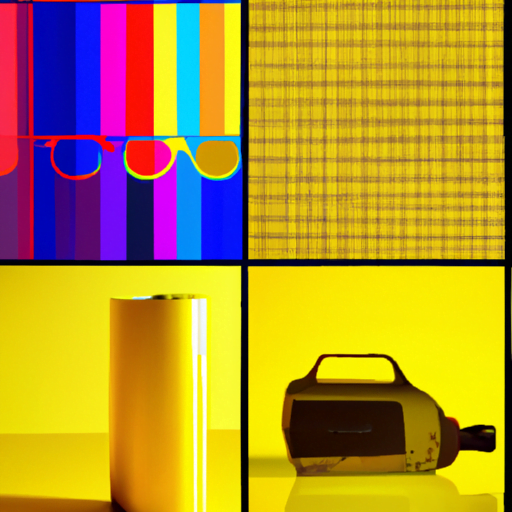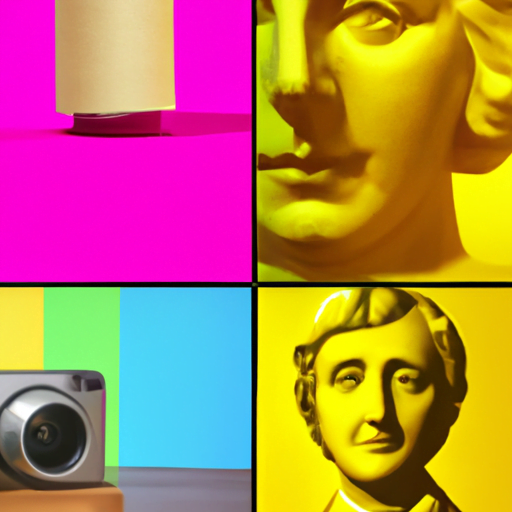
-
Table of Contents
The Impact of Art History on Modern Graphic Design

Art history has played a significant role in shaping the field of graphic design. From ancient cave paintings to Renaissance masterpieces, the evolution of art has influenced the way designers approach their craft. By studying the techniques, styles, and concepts of art history, graphic designers gain a deeper understanding of visual communication and are able to create more impactful and meaningful designs. In this article, we will explore the various ways in which art history has impacted modern graphic design.
1. Inspiration from Art Movements
Art movements throughout history have provided graphic designers with a rich source of inspiration. The exploration of different artistic styles and techniques has allowed designers to push the boundaries of their work and create innovative designs. For example, the bold and geometric shapes of the Art Deco movement have influenced many modern graphic designs, particularly in the realm of branding and packaging.
Case Study: The Art Nouveau movement, which emerged in the late 19th century, is known for its organic and flowing forms. This movement heavily influenced the work of graphic designer Alphonse Mucha, who created iconic posters featuring intricate illustrations and decorative typography. Mucha’s style continues to inspire contemporary designers, with his influence evident in various advertising campaigns and album covers.
2. Understanding Composition and Layout
Art history provides graphic designers with a foundation in composition and layout. By studying the works of renowned artists, designers learn how to arrange elements on a page to create balance, harmony, and visual interest. The principles of composition, such as the rule of thirds and the golden ratio, are derived from art history and are widely used in graphic design.
Case Study: The Renaissance period, with its emphasis on proportion and perspective, greatly influenced the way designers approach composition. Artists like Leonardo da Vinci and Michelangelo mastered the art of creating balanced and visually pleasing compositions. Their techniques, such as the use of leading lines and focal points, are still applied in modern graphic design to guide the viewer’s eye and create a sense of hierarchy.
3. Color Theory and Symbolism
Art history has also had a profound impact on the use of color in graphic design. Artists throughout history have explored the emotional and symbolic associations of different colors, and designers have adopted these principles to evoke specific moods and convey messages through their work. Understanding color theory allows designers to create visually appealing and effective designs.
Case Study: The vibrant and expressive use of color in the works of the Fauvist movement, led by artists like Henri Matisse, has influenced modern graphic design. The bold and unconventional color combinations used by the Fauvists have inspired designers to experiment with unexpected color palettes and create visually striking designs that capture attention.
4. Typography and Lettering
Typography is a fundamental aspect of graphic design, and its evolution can be traced back to the history of lettering and calligraphy. By studying the development of typography throughout different art movements, designers gain a deeper understanding of the expressive potential of letterforms and how they can be used to enhance a design.
Case Study: The Bauhaus movement, which emerged in the early 20th century, revolutionized typography by emphasizing simplicity and functionality. Influential designers like Herbert Bayer and Jan Tschichold developed innovative typefaces that are still widely used today. The Bauhaus approach to typography, with its clean lines and geometric forms, continues to shape modern graphic design.
5. Embracing Cultural Diversity
Art history encompasses a wide range of cultures and traditions, providing designers with a global perspective and encouraging them to embrace diversity in their work. By studying art from different time periods and regions, designers gain insights into different visual languages and can incorporate elements from various cultures into their designs.
Case Study: The incorporation of Japanese art and design principles, such as minimalism and asymmetry, into Western graphic design is a testament to the impact of cultural diversity. The influence of Japanese art can be seen in the work of renowned designers like Paul Rand and Saul Bass, who embraced simplicity and clean lines in their designs.
Conclusion
Art history has had a profound impact on modern graphic design. By drawing inspiration from art movements, understanding composition and layout, exploring color theory and symbolism, studying typography and lettering, and embracing cultural diversity, designers are able to create more meaningful and impactful designs. The study of art history provides designers with a rich visual vocabulary and a deeper understanding of the principles that underpin effective design. By incorporating elements from art history into their work, designers can create designs that resonate with audiences and stand the test of time.
